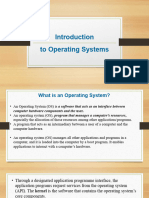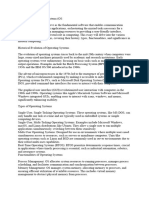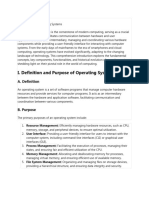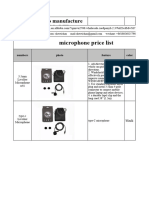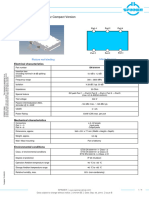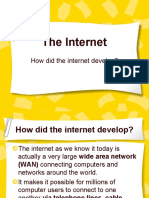0% found this document useful (0 votes)
40 views9 pagesOperating System
The document discusses the essential role of operating systems (OS) as intermediaries between computer hardware and users, detailing their functions such as process, memory, file system, device management, security, and user interface management. It categorizes various types of OS, including batch, time-sharing, distributed, network, real-time, and mobile operating systems, while highlighting popular examples like Windows, macOS, Linux, Android, and iOS. The conclusion emphasizes the importance of understanding OS to appreciate the technology that enables seamless interaction in the digital world.
Uploaded by
serialkiller70724Copyright
© © All Rights Reserved
We take content rights seriously. If you suspect this is your content, claim it here.
Available Formats
Download as DOCX, PDF, TXT or read online on Scribd
0% found this document useful (0 votes)
40 views9 pagesOperating System
The document discusses the essential role of operating systems (OS) as intermediaries between computer hardware and users, detailing their functions such as process, memory, file system, device management, security, and user interface management. It categorizes various types of OS, including batch, time-sharing, distributed, network, real-time, and mobile operating systems, while highlighting popular examples like Windows, macOS, Linux, Android, and iOS. The conclusion emphasizes the importance of understanding OS to appreciate the technology that enables seamless interaction in the digital world.
Uploaded by
serialkiller70724Copyright
© © All Rights Reserved
We take content rights seriously. If you suspect this is your content, claim it here.
Available Formats
Download as DOCX, PDF, TXT or read online on Scribd
/ 9

